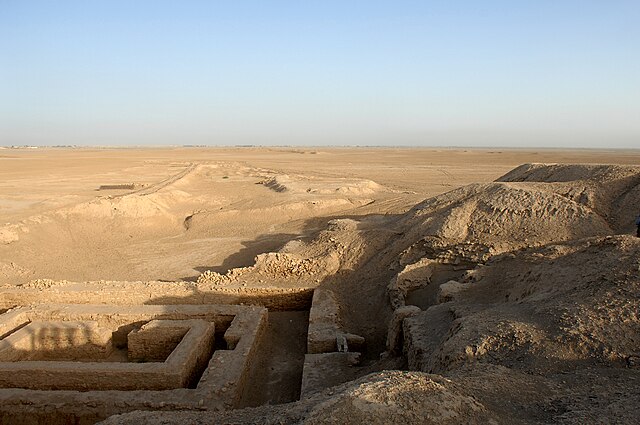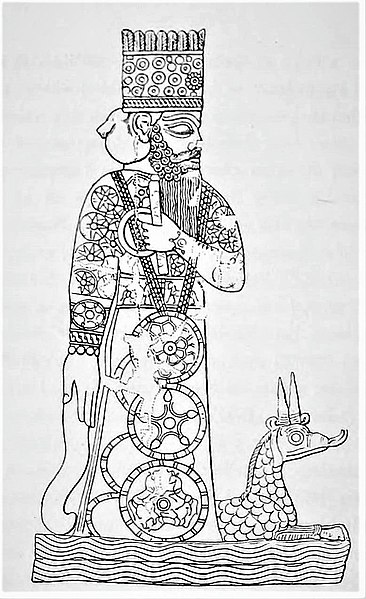Nabopolassar was the founder and first king of the Neo-Babylonian Empire, ruling from his coronation as king of Babylon in 626 BC to his death in 605 BC. Though initially only aimed at restoring and securing the independence of Babylonia, Nabopolassar's uprising against the Neo-Assyrian Empire, which had ruled Babylonia for more than a century, eventually led to the complete destruction of the Assyrian Empire and the rise of the Neo-Babylonian Empire in its place.
Clay cylinder of Nabopolassar from Babylon
The ruins of the city of Uruk, where Nabopolassar and his family may have originated
The so-called "Chronicle of Nabopolassar". The cuneiform inscriptions on this clay tablet narrate the chronicle of the years 608-605 BC. After the fall of Nineveh, Naboplolassar vied with Egypt to control Assyria's western territories. His death stopped the campaign and sent his son Nebuchadnezzar II back to Babylon to claim the throne
In the latter part of the Neo-Assyrian king Ashurbanipal's (pictured) reign, when Babylonia was governed by his appointed vassal king Kandalanu, Assyria and Babylonia enjoyed a long period of peace. Nabopolassar's revolt began in the period of turmoil following the deaths of both Ashurbanipal and Kandalanu.
The Neo-Babylonian Empire or Second Babylonian Empire, historically known as the Chaldean Empire, was the last polity ruled by monarchs native to Mesopotamia. Beginning with the coronation of Nabopolassar as the King of Babylon in 626 BC and being firmly established through the fall of the Assyrian Empire in 612 BC, the Neo-Babylonian Empire was conquered by the Achaemenid Persian Empire in 539 BC, marking the collapse of the Chaldean dynasty less than a century after its founding.
Stele of Nabonidus exhibited in the British Museum. The king is shown praying to the Moon, the Sun and Venus and is depicted as being the closest to the Moon.
Illustration of the inhabitants of Babylon deriding the Achaemenid king Darius I during the revolt of Nebuchadnezzar III in 522 BC. From the History of Darius the Great (1900) by Jacob Abbott.
Partial view of the ruins of Babylon in modern-day Iraq.
9th century BC depiction from a cylinder seal of the Statue of Marduk, Babylon's patron deity Marduk's main cult image in the city.








